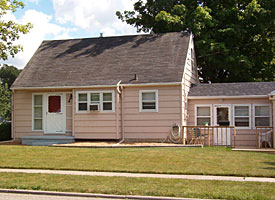Canadians start shying away from buying
Helen Morris
Province

The number of Canadians planning to buy a home falls across the country — except in Quebec.
OTTAWA — The number of Canadians intending to buy a home is at the lowest level since 2002, according to RBC Royal Bank’s annual homeownership survey released yesterday .
The survey results indicated that overall those “planning to buy a home” within the next two years has declined five percentage points to 23 per cent. The number “very likely” to buy a home has fallen from nine per cent in 2007 to seven per cent in 2008 — the lowest level since the survey began 15 years ago.
Survey respondents in Quebec bucked the downward trend with those likely to buy a home in the next two years rising two percentage points to 21 per cent.
The numbers very likely to buy a home were at nine per cent in Saskatchewan and Manitoba followed by Alberta at eight per cent.
Around seven per cent of respondents in B.C., Ontario and Quebec said they were very likely to purchase a home in the next two years with just five per cent in Atlantic Canada saying they expected to be in the market for a home.
The survey authors suggest there are signs of a slowdown in the housing market as the number of Canadians who would “buy now” rather than waiting until next year fell from 58 per cent in 2007 to 52 per cent in 2008.
“I’m not surprised by the results. We’ve had a really long, strong real-estate market and this is not a dramatic drop.” said Catherine Adams, RBC Royal Bank’s vice-president, home equity financing. “It’s really just saying things are starting to cool down. People are . . . being a bit more cautious.”
Adams suggested that Canadians remained optimistic about the housing market — but that they were merely less optimistic than last year.
“I think it’s a healthy economy. It’s a very healthy real-estate market, very healthy mortgage lending practices within Canada.” said Adams.
According to the RBC survey, 56 per cent of respondents also anticipate house prices will rise. In 2007 that figure was 59 per cent.
More respondents also believe their mortgage rates will change. A total of 46 per cent believe rates will rise compared with 43 per cent in 2007. However, the numbers who anticipate a cut in the cost of their home loan rose seven percentage points to 23 per cent.
The online survey is based on a randomly selected representative sample of 3,023 adult Canadians. The results are considered accurate to within plus or minus 1.8 percentage points, 19 times out of 20.






